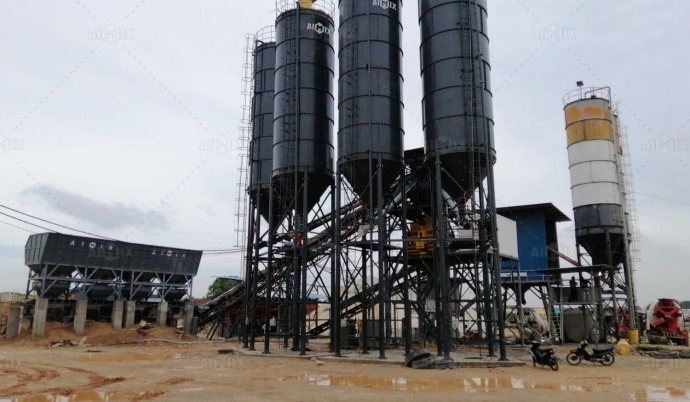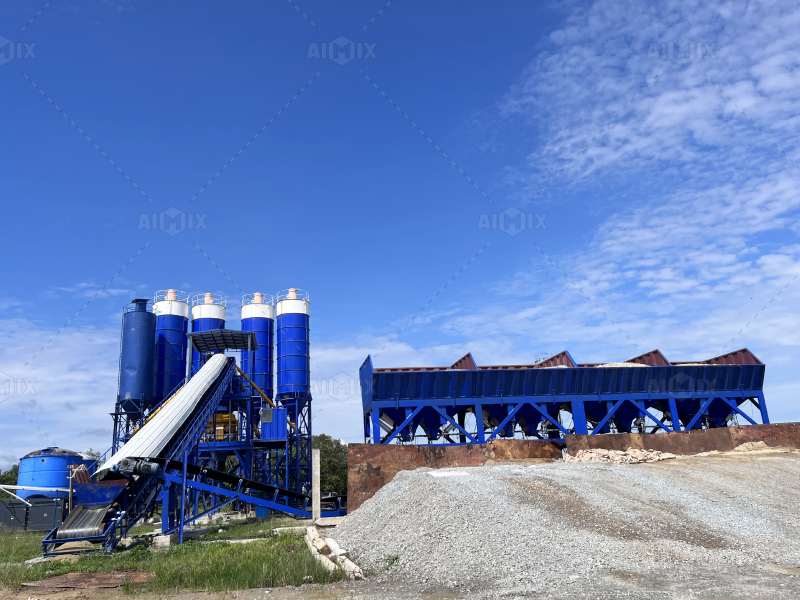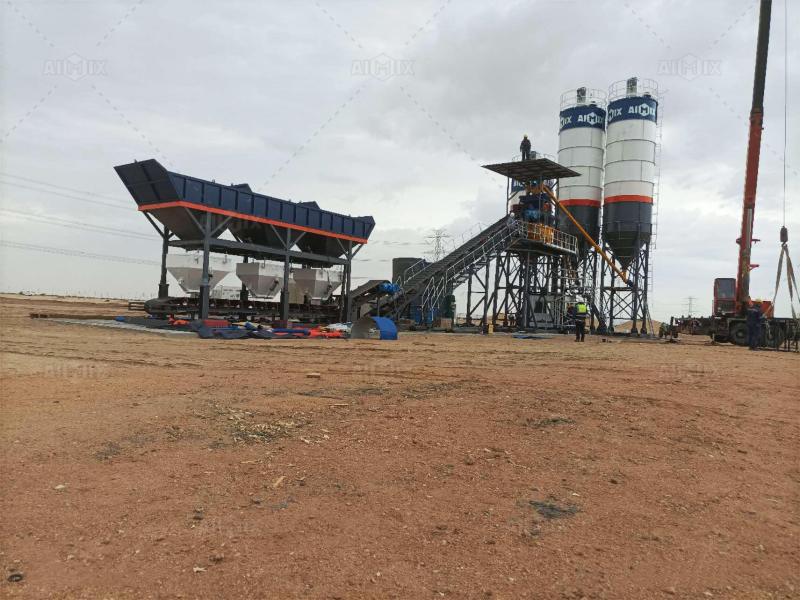The cost of a ready mix concrete (RMC) plant is a crucial factor in determining the success of any construction project. RMC plants are an essential part of modern construction, offering consistent, high-quality concrete that can be customized to meet project-specific requirements. However, the costs associated with purchasing, operating, and maintaining an RMC concrete plant can have a significant impact on your construction budget and overall project planning. Understanding these costs and how they relate to various types of plants, such as stationary batching plants, and working with reputable batching plant manufacturers can help you make informed decisions and optimize your investment.
The Role of RMC Concrete Plants in Construction
An RMC concrete plant, also known as a ready mix concrete plant, is a facility where ingredients such as cement, aggregates, water, and additives are mixed to produce concrete that meets specific project needs. The concrete is either delivered to the construction site in ready-to-use form or stored on-site for immediate application.
RMC plants are essential for large-scale construction projects, ensuring timely and efficient production of concrete while maintaining consistent quality. They eliminate the need for on-site mixing, saving time and reducing labor costs. Depending on the scope of your project, you may choose between stationary batching plants or portable alternatives, both of which come with their own set of costs and benefits.

Understanding the Costs of Ready Mix Concrete Plants
The ready mix concrete plant cost includes several components that can affect your construction budget and project planning:
1. Initial Investment Costs
- Plant Type: The type of plant you choose significantly affects the initial investment. For example, stationary batching plants are generally more expensive than portable or compact plants due to their higher capacity and durability. Stationary plants are ideal for large-scale, long-term projects.
- Capacity: Plants with higher production capacities are priced higher. While they offer better efficiency and faster output, they may not be cost-effective for smaller projects.
- Automation Level: Fully automated plants with advanced features such as digital control systems, sensors, and remote monitoring are more expensive but improve operational efficiency.
2. Operational Costs
- Raw Materials: Cement, aggregates, and additives are recurring costs. Efficient batching and mix control can reduce wastage and optimize material use.
- Energy Consumption: Electricity or fuel required to power the plant and its components contributes to ongoing operational expenses.
- Labor Costs: While RMC plants reduce labor dependency, you will still need trained operators and maintenance personnel.
3. Maintenance and Repair Costs
- Regular maintenance is essential to ensure the plant runs efficiently. Neglecting maintenance can lead to unexpected breakdowns and costly repairs. High-quality batching plants from reputable manufacturers typically require less frequent maintenance, lowering long-term costs.
4. Transportation and Installation
- The location of the plant relative to the construction site can impact transportation costs. Stationary batching plants, for instance, require a permanent setup, which may incur additional installation expenses.
5. Customization and Add-Ons
- Customizing the plant to meet specific project requirements, such as adding water recycling systems or dust suppression features, can increase the initial cost but may reduce long-term operational expenses.

Impact on Construction Budget and Project Planning
The costs associated with an RMC concrete plant influence both the budgeting and planning stages of a construction project. Here’s how:
1. Budget Allocation
- The initial investment in an RMC plant can take up a significant portion of your construction budget. Accurately estimating the cost of purchasing and operating the plant is crucial to avoid unexpected financial constraints.
- Working with reliable batching plant manufacturers helps ensure you get a plant that meets your needs within your budget. They can provide detailed cost breakdowns and recommend the most suitable plant type for your project.
2. Operational Efficiency
- A well-chosen RMC plant improves efficiency by reducing concrete production time, minimizing material wastage, and ensuring consistent quality. These factors contribute to cost savings in the long run and help keep your project within budget.
- For large-scale projects, stationary batching plants are particularly advantageous as they offer high output and are built for durability. However, their higher initial cost requires careful consideration of ROI over the project’s lifespan.
3. Project Timelines
- The availability of on-demand concrete from an RMC plant ensures that construction schedules are not delayed due to late deliveries or inconsistent quality. This is especially critical for time-sensitive projects.
- Portable batching plants offer greater flexibility for projects that require frequent site changes, whereas stationary plants are better suited for continuous operations in one location.
4. Scalability and Long-Term Planning
- Investing in an RMC concrete plant with a scalable design allows you to adapt to future demands. For example, starting with a medium-capacity plant and upgrading as your business grows can help spread costs over time.
- Advanced batching plant equipment from reputable manufacturers often includes features that make it easier to scale up production without significant additional investment.

Choosing the Right Batching Plant Manufacturers
The manufacturer you choose plays a significant role in determining the cost-effectiveness and reliability of your RMC concrete plant. Here are some tips for selecting the best batching plant manufacturers:
- Reputation and Experience: Established manufacturers with a strong track record are more likely to provide high-quality equipment and reliable support.
- Customization Options: Look for manufacturers that offer flexible solutions tailored to your project’s requirements.
- After-Sales Support: Comprehensive support, including maintenance, spare parts, and technical assistance, ensures long-term reliability.
- Energy Efficiency: Manufacturers offering energy-efficient batching plant equipment can help reduce operational costs.
- Warranty and Certifications: A good warranty and adherence to industry standards provide added assurance of the plant’s quality and durability.
Reducing Costs Without Compromising Quality
To minimize the costs of an RMC concrete plant while maintaining quality, consider the following strategies:
- Optimize Capacity: Choose a plant that matches your project’s production requirements to avoid overpaying for unnecessary capacity.
- Invest in Automation: Automated systems improve efficiency and reduce labor costs in the long run.
- Focus on Maintenance: Regular maintenance prevents costly breakdowns and extends the plant’s lifespan.
- Use Local Suppliers: Sourcing raw materials locally reduces transportation expenses and supports local businesses.
Conclusion
The cost of an RMC concrete plant, whether it’s a portable unit or a stationary batching plant, has a direct impact on your construction budget and project planning. By understanding the factors influencing these costs and working with reputable batching plant manufacturers, you can make informed decisions that maximize efficiency and minimize expenses. Investing in the right plant not only ensures consistent, high-quality concrete production but also contributes to the overall success of your construction projects. With careful planning and strategic cost management, an RMC concrete plant can be a valuable asset for any construction business.